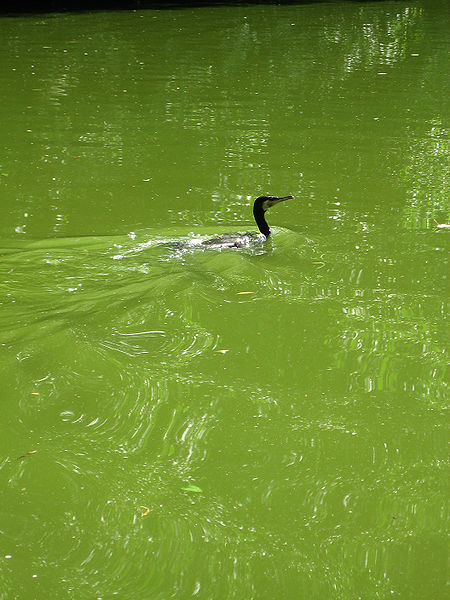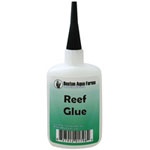 What fun is a pond with pea-green water or masses of stringy gunk growing from every submerged surface? You work so hard to keep your pond clean, clear and looking good, but even with the best efforts, algae can appear in a flash, a stringy, slimy eyesore, mucking up the view. Most algae outbreaks can be quelled by addressing water chemistry (nutrient) issues or finding a way to control the amount of light that penetrates the water’s surface.
What fun is a pond with pea-green water or masses of stringy gunk growing from every submerged surface? You work so hard to keep your pond clean, clear and looking good, but even with the best efforts, algae can appear in a flash, a stringy, slimy eyesore, mucking up the view. Most algae outbreaks can be quelled by addressing water chemistry (nutrient) issues or finding a way to control the amount of light that penetrates the water’s surface.
Getting to the proverbial root of the problem is the best solution, but there are also numerous algae control products on today’s market to help you rid your pond of that unsightly green invader, at least temporarily. While we generally recommend algaecides as a last resort, when you reach that point it’s important to use them correctly to ensure the safety of fish, plants and other inhabitants of your pond.
Getting to the Root of the Problem
Algae blooms are generally the result of either too much sun exposure or too many nutrients available in the water for the algae to feed on. If your pond is exposed to full sun for the majority of the day or when it is strongest, alga take advantage. You can provide shade using floating and marginal plants which provide cover for fish and other pond inhabitants, as well as aiding in nutrient control. Desirable flora like floating lettuce, hyacinth and duckweed will compete for dissolved nutrients and provide the shade you need while also serving as a food source and shelter for fry that may be produced by koi and goldfish.
Nutrients can be a little trickier. It may require some investigation to determine the source. Nitrates and phosphates are the key nutrients to target when trying to control algae growth. These nutrients can be created in the pond as sludge, waste and debris break down, and some may be introduced in source water or through runoff from rainstorms.
There are test kits available to monitor the levels of nitrates and phosphates, and regular testing is recommended. Adequate filtration and diligent maintenance can be key factors to keeping nutrients at bay. Remove leaves and other plant debris, fish waste, uneaten food and other organic matter that will break down and create food for nuisance algae.
Add live submerged, marginal and floating plants to your pond decor that will use the remaining nutrients before algae takes over. If nutrients are being introduced to the pond from external sources, take steps to limit or eliminate the contamination. There are also water additives you can administer to help remove phosphates and other organics.
Treatment Options
 If you want to explore the various types of algaecides and algae-fighting treatments available to find one that will suit your needs, there are several things you’ll need to know. Before you bother to shop, know the size of your pond so you’ll know how much of any given treatment you’ll need. What kind of algae are you fighting? Do you have livestock in your pond or do pets and other animals drink from the pond? Do you have ornamental plants in the pond that may be affected by the treatment you use?
If you want to explore the various types of algaecides and algae-fighting treatments available to find one that will suit your needs, there are several things you’ll need to know. Before you bother to shop, know the size of your pond so you’ll know how much of any given treatment you’ll need. What kind of algae are you fighting? Do you have livestock in your pond or do pets and other animals drink from the pond? Do you have ornamental plants in the pond that may be affected by the treatment you use?
Natural solutions including barley straw products or biological additives and fish safe water dyes may be the first options to explore. Natural compounds that materialize as the lignin in barley straw biodegrades act as oxidizers to combat algae. Barley pellets, extract and other variations work the same way, but faster, as the compounds are more readily available in these forms. Biological additives boost bacterial that help to digest muck in the pond, reducing nutrients that feed algae. Water dyes and tints block the sunlight and prevent algae from forming and taking over. These methods allow for continuous control, simply replenish the straw as it degrades and the dye as it fades to keep algae in check.
For larger problems including ponds already over whelmed with algae, free-floating algae blooms or algae on tough to reach or clean surfaces like rocks and equipment, stronger algaecides may be necessary.
Algaecides for planted ponds are generally formulated with oxidizing ingredients that destroy algae on contact or chemical ingredients that break down cell walls of simple alga. These treatments are typically safe for fish, ornamental plants and other animals in and near the pond provided instructions are followed.
Algaecides for non-planted ponds often contain copper as the active ingredient which has the potential not only to kill plants, but is also harmful to snails and other organisms in the pond. Pea soup water is the result of free-floating algae, and the best long term solution may be to invest in a UV Sterilizer. While the initial expense may seem like a lot, this problem can frequently recur and a sterilizer will likely become the best investment you make to keep your pond clear. As your pond water passes through the sterilizer, the UV rays destroy the single celled organisms exposed to it, including alga, parasites and other harmful critters.
Manual removal of as much algae as possible before treatment is highly recommended to allow algaecides to work more efficiently and to prevent mucking up the pond after treatment. Closely follow the manufacturer’s instructions to ensure proper dosage and to take any precautions in using chemical means to keep your livestock safe during and after treatment.
Make sure you have adequate aeration and surface agitation to supply your fish with vital oxygen, especially important during the warmer months. CO2 build-up and the new absence of oxygen-producing algae can cause an instant drop in available dissolved oxygen, especially if you treat in the evening. Low oxygen levels may cause fish to become sluggish or listless, and you may see them gasp at the surface or congregate at a fountain head or waterfall where more oxygen is available. If ample aeration is not restored, your fish may not survive. It is best to treat early in the day when you are able to observe how your animals are responding and take steps if necessary to add more aeration should they show distress.
Remove as much of the dead algae and debris as possible when treatment is complete, so that it isn’t left to decay in the pond. Once treatment is finished, a partial water change/siphon is also recommended, with particular attention to the bottom of the pond to remove the debris that may settle there. Addition of a biological “sludge remover” or bacterial supplements will help to breakdown the remaining debris to prevent further water chemistry issues.
 That Fish Blog – Aquarium Advice and Information
That Fish Blog – Aquarium Advice and Information


I quite like the water to be slightly cloudy to protect the fish from predators. I have lost a few koi of late, so i turned my uv filters off to allow the algae to grow. I am hoping the plants will stabilise the pond in time. Time will tell i guess.
I cannot get the phosphate levels down in my pond, what should I do
Hello Barbara, Phosphate levels in a pond can be nearly impossible to reduce due to fertilizer runoff from farms and gardens. Phosphate-removing filter media will help as will live plants that use the phosphate to grow. If you are experiencing algae blooms as a result of the phosphate, the solutions in this blog will help control the algae until you can reduce the phosphate levels.